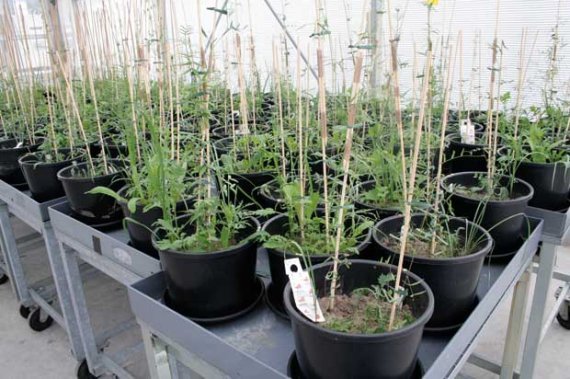Extreme weather such as drought continues to influence the success of plants even after it is over. This process goes through the soil life, and local plants seem to be more sensitive to extreme weather than exotics. Researchers from the Nematology and Soil Quality chair groups and the NIOO discovered this by exposing soils to simulated drought and floods. They published their findings on 28 May in the journal PNAS. The researchers carried out a comparative experiment with local and exotic plants from the Waal river area. In the greenhouse they exposed some of the soils in the plant pots to ‘extreme weather conditions’: long-term drought or heavy rain. Then they planted the seedlings and observed how they reacted. Exotics seemed less bothered than local plants were by the extreme weather experienced in the past. In a second experiment the soil in which half of the plants were planted was first sterilized. Without any soil life the differences between exotic and local plants disappeared. This made it clear that extreme weather conditions influence the future growth of plants through the soil rather than through the plant itself.
Climate change
This research is of great relevance at a time when climate change is causing plant habitats to shift slowly northwards. ‘What is more, it is assumed,’ explains Wim van der Putten, extraordinary professor of Nematology, ‘that extreme weather events occur more often because of climate change.’ Understanding their ‘legacy’ can help scientists predict which plants will successfully colonize more northern habitats. Quite how the soil life is changed by extreme weather is not yet clear. It is possible that pathogenic bacteria thrive better, or that helpful moulds are wiped out. The plant pots behind the NIOO already contain new plants that are supposed to help establish the facts on this. ‘I think it’s a pity we didn’t keep the soil samples,’ says Van der Putten. At the time he did not imagine it would so soon become possible as well as affordable to study the soil life at the molecular level.’

